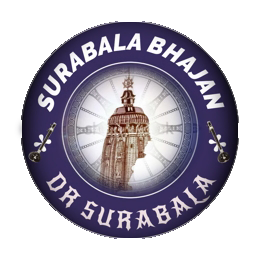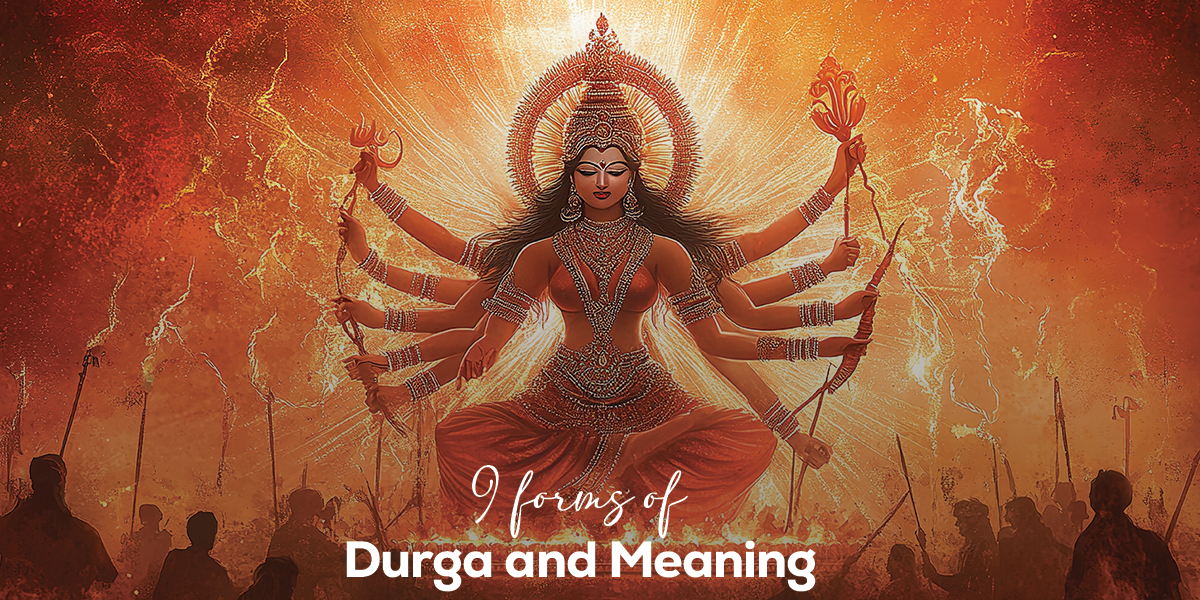The celebration of Durga Puja 2024 is a time of devotion, festivity, and spiritual awakening. During the nine days of Navratri, devotees across India and the world honor the 9 forms of Durga, each representing a unique aspect of feminine divinity. Moreover, these forms are worshipped for their protective, nurturing, and empowering energies. As Navratri approaches, it’s essential to understand the significance of each form, as they guide us through life’s challenges and help us seek spiritual growth.
So, this blog will explore the 9 forms of Durga, their meanings, and how they symbolize various aspects of life and the universe.
9 Forms of Durga:
1. Shailaputri – The Mountain’s Daughter
On the first day of Navratri, people worship Shailaputri, the initial incarnation of Durga. As the daughter of the Himalayas, she symbolizes nature’s strength and beauty. Riding a bull and holding a trident and lotus, signifies the power of determination and patience. Further, Shailaputri represents the grounding force that helps us stay connected to our roots, providing strength to face life’s challenges.
Additionally, her worship is essential for those seeking stability and perseverance. She is often associated with the root chakra, which represents survival and grounding.
2. Brahmacharini – The Ascetic
The second form of Durga, Brahmacharini, represents penance and devotion. She embodies the essence of discipline and spirituality. As an ascetic goddess, she holds a rosary in one hand and a water pot in the other, signifying her unwavering focus and self-control.
Further, Brahmacharini is a reminder of the importance of dedication and inner strength in life. Her story of deep meditation to win the love of Lord Shiva serves as a symbol of unwavering faith. Moreover, worshipping her brings peace, spiritual growth, and the ability to overcome obstacles with grace.
3. Chandraghanta – The Warrior Goddess
Devotees honour Chandraghanta, Durga’s warrior avatar, on the third day of Navratri. Her name comes from the crescent moon adorning her forehead, and she rides a fierce tiger, symbolizing her bravery and readiness to fight against evil.
Further, Chandraghanta is the embodiment of courage and justice. She is respected for her ability to take away hindrances, negativity, and unfairness from her devotees’ life. Moreover, this form of Durga teaches us to be fearless in the face of challenges, balancing inner peace with the ability to fight when necessary.
4. Kushmanda – The Universe’s Creator
In Navratri, on the fourth day, Kushmanda is worshipped. She is believed to have created the universe with her smile, and her name reflects this creative energy, meaning “the cosmic egg.” She is depicted with eight arms, each holding symbols of life and sustenance, such as a rosary, lotus, and weapons.
Kushmanda symbolizes the creation and nurturing aspects of the universe. Worshippers seek her blessings for health, wealth, and prosperity. Her energy is connected to the solar plexus chakra, which is in charge of one’s own strength and vitality. With the best Durga Puja Bhajan online, you can inculcate yourself into the worship of Durga and feel the spiritual connection.
5. Skandamata – The Mother of Skanda
On the fifth day, Skandamata is worshipped as the mother of Lord Skanda, the commander of the divine army. Skandamata, riding a lion and holding her son, embodies motherly love, care, and protection with nurturing strength.
Her blessings are sought for by devotees for the welfare of their families and children. She teaches the power of love, compassion, and protection, especially during difficult times. Worshipping Skandamata brings peace and harmony to the household.
6. Katyayani – The Warrior Sage
The sixth incarnation of Durga, Katyayani, is praised for her strength and determination in defeating the devil Mahishasura. Born from the collective energy of the gods, she is a fierce warrior who represents the victory of good over evil. Katyayani rides a lion, and her four arms hold a sword, shield, and other weapons, showing her readiness to protect her devotees.
For assistance with choosing a compatible life partner, young girls often pray to Katyayani. She is also known to bring strength, courage, and determination to those who face adversities.
7. Kalaratri – The Fearsome Protector
On the seventh day of Navratri, devotees worship Kalaratri, the most terrifying form of Durga. She is the remover of ignorance and darkness. Depicted with dark skin, unkempt hair, and a garland of skulls, Kalaratri rides a donkey and holds a sword, symbolizing her fierce nature.
Kalaratri represents the power to destroy negativity, fear, and ignorance. Although she appears fearsome, she is a compassionate protector who grants her devotees courage and protection. Worshipping Kalaratri gives one the power and resolve to tackle life’s obstacles head-on and helps one conquer fear.
8. Mahagauri – The Goddess of Purity
The eighth form, Mahagauri, represents purity, peace, and tranquility. She is seen with a fair complexion, riding a bull, and holding a trident and drum. Those who seek forgiveness and fresh start in life, must worship Mahagauri.
Her blessings bring spiritual growth and inner transformation. Devotees worship her for purity of mind, soul, and body, as well as for strength in overcoming past mistakes. Mahagauri eases all sorrow and promotes inner peace.
9. Siddhidatri – The Granter of Perfection
On the final day of Navratri, devotees honor Siddhidatri, the goddess of supernatural powers or “siddhis.” Seated on a lotus, she represents the culmination of all that devotees seek during the festival—perfection and achievement. Siddhidatri bestows blessings on her worshippers, helping them achieve their goals in both the material and spiritual realms.
Worshipping Siddhidatri brings success, wisdom, and fulfillment. She represents the ultimate state of divine grace and is a reminder that through devotion, one can attain perfection.
The Best Durga Puja Bhajan:
As you immerse yourself in the divine energy of Durga during Navratri, listening to the Durga Puja bhajans can uplift your spirit and enhance your devotion. These devotional songs evoke the goddess’s blessings and fill the heart with joy and peace. Many devotees believe that music and bhajans create a direct connection with the divine, allowing for a deeper spiritual experience during Durga Puja.
To Wrap Up:
Navratri is not just a festival; it’s a spiritual journey where devotees worship the nine forms of Durga, each offering unique blessings and powers. From Shailaputri’s grounding strength to Siddhidatri’s divine perfection, the goddess in her various forms guides us toward success, wisdom, and inner peace. As Navratri 2024 approaches, may the energy of Durga fill your life with courage, purity, and spiritual fulfillment.

